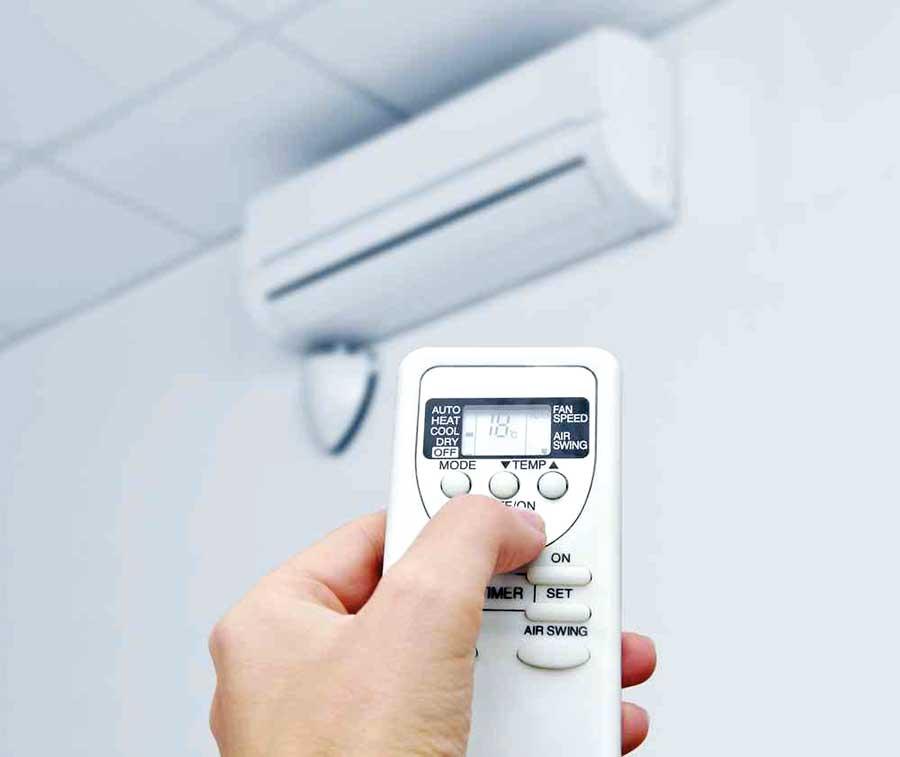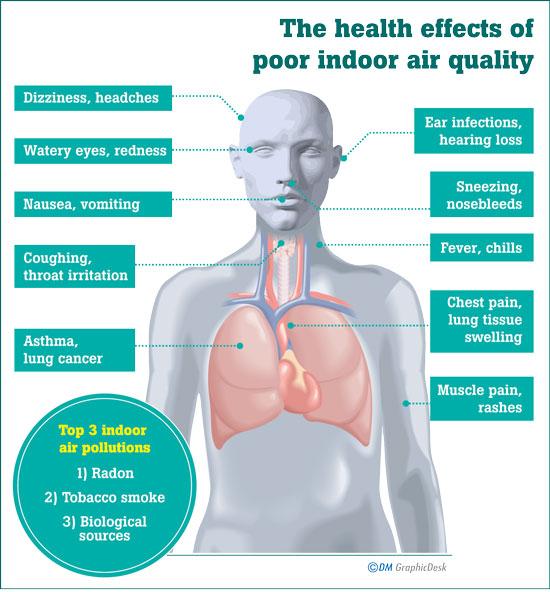22 Nov 2019 - {{hitsCtrl.values.hits}}

 With the improvements in the standards of living people require more and more comfortable and healthful indoor environment. As a result air-conditioning systems have been widely used worldwide in order to provide thermal comfort and an acceptable indoor air quality for occupants in homes. Therefore, the indoor environment can make an important effects on human health and work efficiency. There are several factors which affect the quality of the indoor environment. These factors are temperature, humidity, air exchange rate, air movement, ventilation, particle pollutants, biological pollutants, and gaseous pollutants.
With the improvements in the standards of living people require more and more comfortable and healthful indoor environment. As a result air-conditioning systems have been widely used worldwide in order to provide thermal comfort and an acceptable indoor air quality for occupants in homes. Therefore, the indoor environment can make an important effects on human health and work efficiency. There are several factors which affect the quality of the indoor environment. These factors are temperature, humidity, air exchange rate, air movement, ventilation, particle pollutants, biological pollutants, and gaseous pollutants.
Problems
An air-conditioning system in a building is like the lungs of the building since air-conditioning system draws in outside air, filters it, heats, cools or humidifies it, circulates it around the building and then expels a portion of it to the outside environment. The quality of indoor air is totally dependent on the operation of the air-conditioning system. However, poor maintenance of air-conditioning may be the reason for lots of problems such as viral illnesses, respiratory problems and deadly Legionnaires Disease.
Lungs and respiratory tract problems (Runny nose, blocked nose, coughing, sore throat, sneezing)
Virus and bacteria reactions ( Fever, chills, headaches, muscular ache, nausea and vomiting, diseases include influenza, bronchitis and Legionnaire’s disease )
Allergic reactions (Itchy nose, watering eyes, shortness of breath, wheezing and coughs. illnesses include sinusitis, asthma and humidifier fever)
According to research studies, there is an increase in the prevalence of Sick Building Syndrome (SBS). This condition is present in 30% of the buildings with air-conditioning systems when compared with natural ventilation systems. These conditions exist due to the lack of attention on maintenance in the air condition system.
Microbial infection
Dust and liquid drops are important media for microorganisms to spread. Dust accumulation coupled with humidity, especially at the downstream section of the cooling equipment, leads to the proliferation of selected group of microorganisms, capable of surviving the normal conditions. Surfaces on AC systems that remain constantly moist, such as the cooling coils and drip pans due to the lack of proper maintenance, are supportive environments for the growth of undesirable micro-organisms. These surfaces are directly exposed to the path of air supplied to occupants to breathe. According to some research studies, the pathogenic fungi identified are Aspergillus niger, Aspergillus flavus and Aspergillus versicolor. They are known to cause invasive aspergillosis and produce carcinogens. Most infections, commonest being aspergillosis, can occur in the immune compromised host or as a secondary infection following inhalation of fungal spores or the toxins produce by them. Symptoms include persistent cold, watery eye, prolonged muscle cramps and joint pain. And alos Aspergillus flavus and Aspergillus fumigates can cause nosocomial infections and allergic bronchopulmonary aspergillosis.
Moreover, identified bacteria from air-conditioning are Bacillus alvei, Providencia stuartii and Bacillus lentus. While more organisms were reported during the dry season, this could be attributed to the changes in the weather condition with dry season producing a lot of dust particles that could have contained microbial spores as they are blown into the air by the wind. One study has implicated Bacillus species in pneumonia and other respiratory tract infections. Only particles in the air can contaminate the filters. This is because all spore forming organisms were most prevalent in the dry season. However, non-spore formers could contaminate the filters during repair by touch, human aerosols from cough, sneezing, talking and other similar mechanisms. In addition the gram positive bacteria that isolates is confirmed as Bacillus lentus and two species of Bacillus alvei. Decosemo is reported to be present as bacillus lentus in cooler filters. These species are known to cause pneumonia and other respiratory tract infections. Providencia stuartiis, the gram negative bacteria isolated is known to cause sick house building syndrome and illness due to endotoxins; which are the lipo-polysaccharides of gram negative bacterial cell wall. These are potent pyogens capable of causing fever in very low concentrations. High exposure to endotoxins is often associated with nausea and diarrhea.
Sick building syndrome
Sick Building Syndrome is known as a condition affecting office workers and residents typically marked by headaches and respiratory problems. These conditions are attributed to unhealthy or stressful factors in the working environment such as poor ventilation. Studies have discovered that visible moisture and mould in buildings suggest immunological responses such as asthma or allergies, involving either triggering or initial sensitization. Moreover, studies suggested that contaminants from AC systems in commercial buildings may cause an immunologically mediated response in a considerable proportion of occupants. A number of studies also indicated that buildings with inadequate ventilation may increase the transmission of infectious respiratory diseases among residents.
Humidification systems in poor air conditions are associated with significantly increased symptoms in upper respiratory system, eye symptoms, fatigue, difficulty in concentrating and skin symptoms. Moreover, research studies indicated that less frequent cleaning of cooling coils and drain pans are associated with significantly increased eye symptoms and headache.
Legionnaires’ disease
Legionella pneumophila, which is a significant respiratory pathogen and poorly maintained air-conditioning systems, are generally consider as a potential transmitters of this pathogen producing legionellosis in either the form of Legionnaire’s disease or as Pontiac fever. According to the research findings, viable counts of legionellae have been reported more in cooling towers of air conditioning systems than in natural habitats. Usually the Legionella infection occurs through inhalation of aerosolized bacteria by susceptible persons. Man to man spread has not been reported while cooling tower systems of air conditioning give a better chance for the organism to grow and multiply and distribute the bacteria into the surrounding environment by formation of aerosols through the process of aerosols generated. If the water is contaminated with Legionella these aerosols can cause the disease.
According to the study conducted in cooling towers of air condition system in tourist hotels in the western and central provinces of our country Legionella pneumophila species were discovered and this was the first study to explore the presence of legionellae in a Sri Lankan environment. This research study provided evidence that hotel workers are susceptible to this particular infection.
It is essential to frequently maintain and monitor the air conditioning systems in all work places, vehicles and inhabitant in order to prevent diseases mentioned above. This is because people spent 90% of their life time in an indoor environment and it may be at school, home or the work place.
The writer is a medical laboratory technologist at a private hospital and holds a MSc. Degree in Industrial and Environmental Chemistry from the University of Kelaniya and BSc and a Food Production and Technology Management degree from the Wayamba University of Sri Lanka.
21 Dec 2024 21 Dec 2024
21 Dec 2024 21 Dec 2024
21 Dec 2024 21 Dec 2024
21 Dec 2024 21 Dec 2024
21 Dec 2024 21 Dec 2024